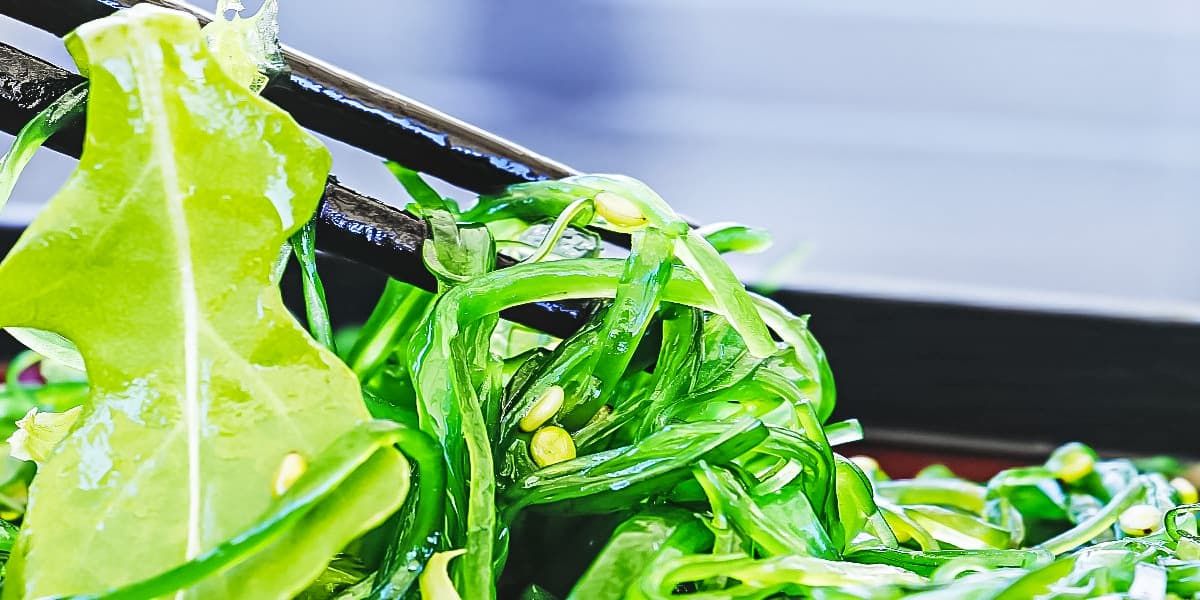While the threats of climate change can seem overwhelming, hope lies in transformation. Perhaps the most promising solution is kelp farming. Kelp cultivation harnesses kelp’s natural revitalizing properties and provides sustainable resources for a growing population.
Kelp farming is the production of seaweed for food, fuel, and restoration. As an ideal crop, kelp is high in protein and nutrients, grows quickly, and requires no fresh water, pesticides, or fertilizers. Seaweed also produces vast amounts of ethanol with very little input and thus has potential as a biofuel which companies aim to take to market by 2030.
The primary benefit of seaweed farming is kelp’s capacity to remove carbon dioxide. In the atmosphere, carbon dioxide acts as a greenhouse gas and traps heat. Due to climate change, atmospheric and ocean temperatures are steadily increasing. In the ocean, dissolved carbon dioxide gas leads to ocean acidification, which creates decreases in ocean pH, these decreases negatively affect numerous marine organisms. If kelp farms covered just 6% of the ocean, seaweed could remove all human-contributed carbon dioxide. Seaweed farming can mitigate the impacts of climate change while supplying enough food to feed the planet.
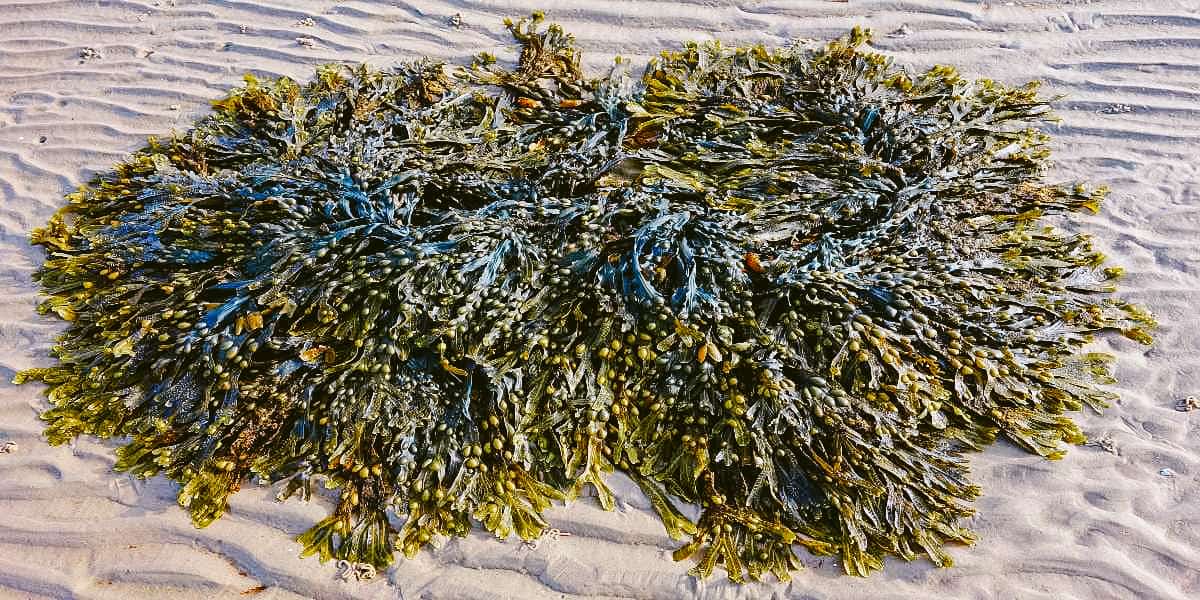
Forms of Ocean Farming
Traditional aquaculture is the breeding, rearing, and harvesting of fish or shellfish in controlled environments. These commercial fish farms raise stock in enclosed systems, either inland or in open-sea pens. Aquaculture preserves wild fish populations and is commonly suggested as a solution to overfishing. While it is true that fish farming allows natural stocks to recover, it also requires high inputs and faces sustainability challenges. Like traditional farming, the aquaculture industry encounters problems with pollution, waste disposal, and space. Therefore, to curb these effects, more fish farmers are turning to restorative aquaculture.
Unlike the controlled environments of typical fish farming, restorative aquaculture uses what the ocean naturally provides. Sometimes called polyculture, restorative aquaculture raises seaweed and shellfish together, reaping the ecological benefits of both. Cultivating algae at sea reduces local pollution levels and creates a habitat for natural fish stock. Restorative farming can produce more food, provide more jobs, and have less of an environmental impact than traditional aquaculture.
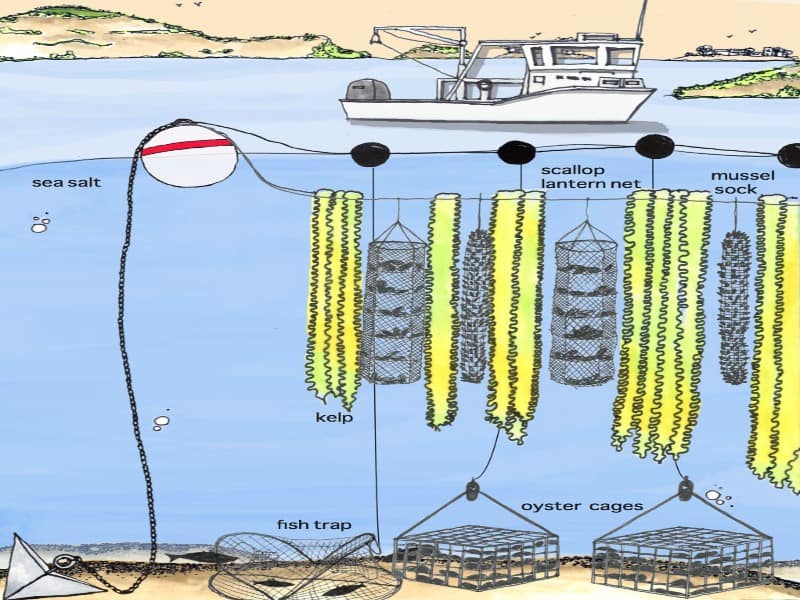
3-D ocean farming is a particular type of restorative aquaculture. Often called vertical ocean farming, 3-D kelp farming is very similar to how it sounds. Here kelp farmers utilize the entire water column from top-to-bottom, like a suspended underwater garden, seaweed cultivation replicates an entire aquatic ecosystem. To provide vertical structure for kelp to grow from, buoyed lines attach to hurricane-proof anchors below. Several feet below the surface, horizontal ropes connect these vertical, algae-covered lines. Swaying between the upright swatches of kelp hang scallop nets and mussel socks, and below that sit oyster cages and fish traps. Using minimal space and zero fertilizers or pesticides, numerous species are grown and harvested at vertical seaweed farms year-round.
Harvesting kelp for biofuel is different from the 3-D restorative ocean farms mentioned. While various types of algae can be fermented to make ethanol, giant kelp is of particular interest. Growing up to a foot a day, giant kelp is the fastest growing seaweed. Its high growth rate and increased biomass make it an ideal candidate for ethanol production. The one catch is that it only survives if anchored to the seafloor. Found at depths up to a hundred feet, giant kelp cultivation can be a challenge. To combat this, scientists and engineers are developing creative technologies including submarine drones or kelp elevators.
Why Kelp Farming Works
Inhale. At least half the oxygen hitting your brain came from marine algae. That oxygen is just one example of an ecological service, something given to us by nature for free. Any healthy ecosystem provides these services, including food, air, and water. Seaweed farming works because it applies an ecosystem approach to farming, benefiting from these natural services.
Restorative ocean farming takes advantage of two efficient natural technologies – shellfish and seaweed. Algae photosynthesize, using energy from the sun to make oxygen and sugar. In the process, seaweed sucks up carbon dioxide (a heat-trapping gas). Kelp can also increase the pH of its environment through the uptake of carbon dioxide, decreasing the severity of ocean acidification. If kelp’s carbon-removing abilities aren’t impressive enough, it is also a great recycler. Algae remove excess nutrients like nitrogen and phosphorus which are common in fertilizer. These pollutants cause algae blooms, resulting in low oxygen levels which kill many fish. Using what nature provides, seaweed can improve local water quality while mitigating the impacts of climate change.
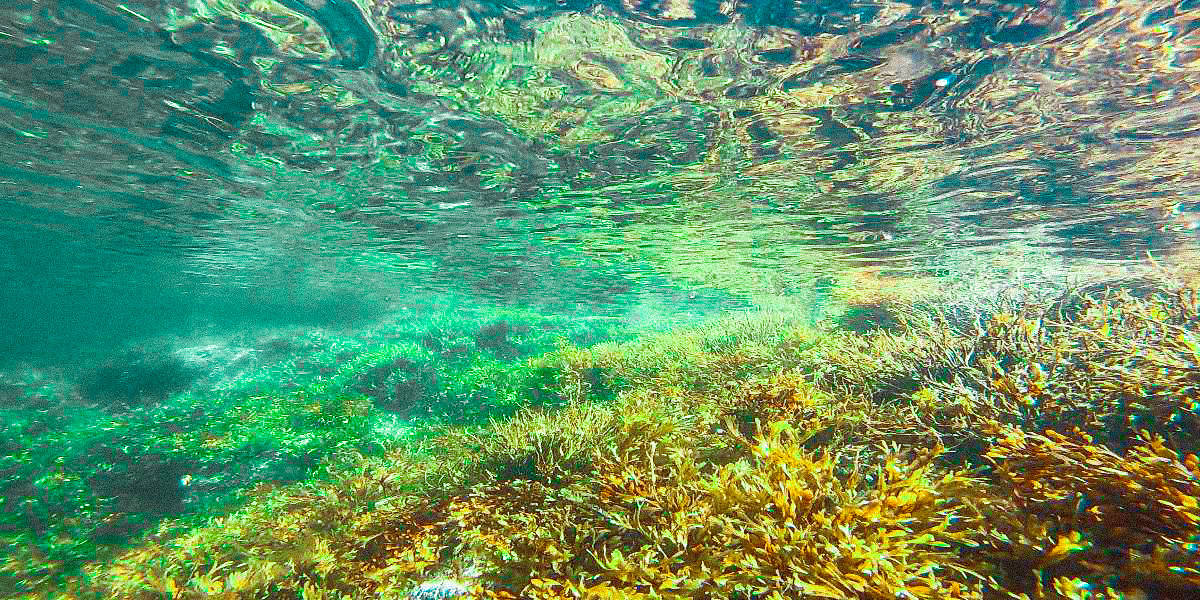
In natural systems, kelp works with other organisms to create a healthy environment. Replicating this interdependence, nets of shellfish hang between flowing columns of seaweed. Shellfish act as natural water filters and further enhance ocean health. Like seaweed, shellfish is low input and low maintenance. They eat by filtering small particles from the water, making them an easy and affordable crop. Furthermore, shellfish are found in popular dishes worldwide, providing protein and nutrients to many.
By collecting byproducts of ecosystem services, kelp farms maintain themselves with little to no input. 3-D ocean farming is ideal because it uses the sunlight and nutrients produced by the environment free of charge. In turn, seaweed farms create healthy food for a growing population. By utilizing these natural services, kelp farms ensure food security while restoring the ocean’s health.
Sustainability: How Ocean Farming Compares to Land-Based Agriculture
Our current method of land-based agriculture is unsustainable. The lofty requirements of industrial, land-based farms take a major toll on the environment. Globally, 70% of all available freshwater is used for agriculture, while nearly one in seven farms goes without access to clean water. Crops not only deplete but also degrade drinking water sources. Modern farming practices often pollute nearby lakes and streams with manure, pesticides, and fertilizers. Excess fertilizer run-off causes algae blooms that rid the water of oxygen, resulting in fish kills and ocean dead zones. Furthermore, the chemical pesticides used in agriculture contribute to biodiversity loss, specifically the notable decline of the pollinators that our crops rely on. Agricultural techniques also contribute to 23% of greenhouse gas emissions, second only to the energy sector.
Resource use aside, land-based farming is unsustainable on its very premise – land. It’s estimated that 50% of all habitable, livable land on Earth is used for agriculture. To support growing global food demand, natural habitats are being converted to agricultural lands. For instance, approximately 80% of the Amazon Rainforest deforestation occurs to make room for cattle farms. Agricultural practices are also damaging to the land itself, leading to topsoil erosion and degradation. Current estimates suggest that 70% of all topsoil is depleted worldwide and may be completely destroyed within 60 years. With an estimated human population of ten billion by 2050, it is critical to start developing innovative and sustainable farming methods now.
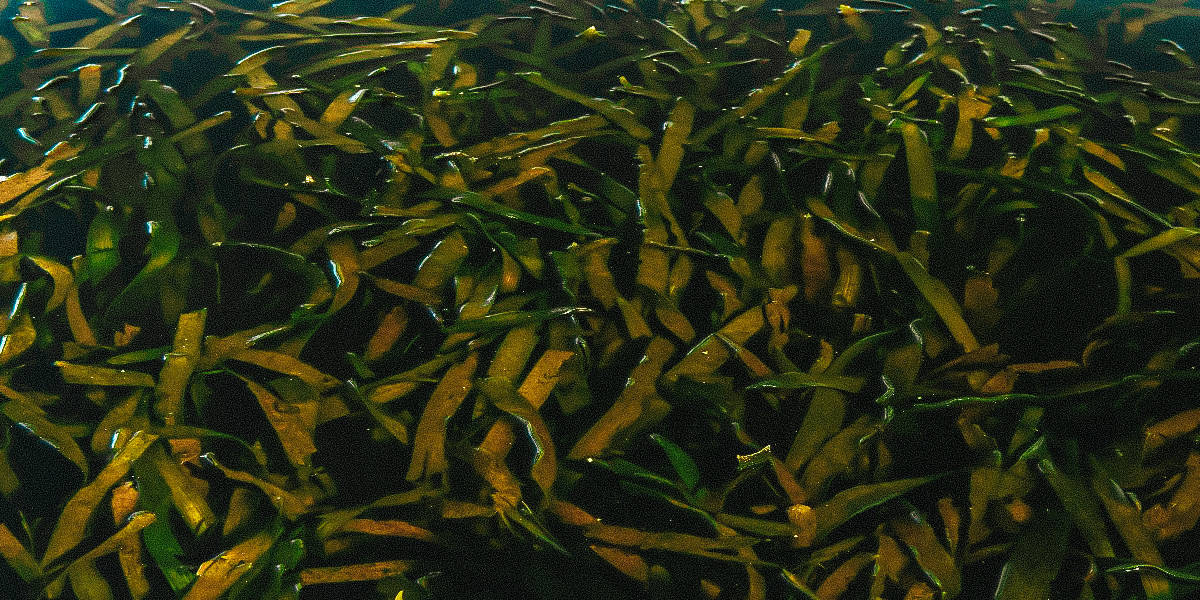
Unlike the detrimental effects of land-based agriculture, seaweed harvesting increases biodiversity. With a low impact and small ecological footprint, ocean farming takes advantage of what the sea provides – seaweed and shellfish. Not only does seaweed grows quickly without the use of pesticides or fertilizers, but kelp cultivation also does not require the soil or freshwater that land-based crops demand. In restorative ocean farming, species work together to remove pollutants and dissolved nutrients from the water. Ocean farming also improves water quality and rehabilitates the natural environment. By harnessing the natural productivity of our oceans, seaweed farms enjoy maximum growth with minimal input.
Commercial Uses for Kelp
Given the usefulness and versatility of algae-derived products, it’s likely you have used algae today without even realizing it! Due to its ability to gel, algae are often used as a thickening agent or emulsifier. Algae extract is found in many common foods and cosmetic products, ranging from ice cream to make-up. Carrageenan and Algin, types of complex carbohydrates derived from seaweeds, are also found in baking products, salad dressing, ice cream, pudding, and chewing gum. Algal compounds are used to process meats, sausages, and fish or to clarify beer and wine after fertilization. Packed with vitamins, algal emulsifiers are a natural and healthy way to produce and preserve food. The thickening ability of seaweed also makes it an attractive additive for industrial or pharmaceutical purposes including paints, pigments, and prescriptions.
Of course, algae can also be directly added to many dishes and eaten as a sea vegetable. A staple amongst Asian cultures, seaweed is becoming increasingly popular in the west as the new superfood. High in protein, fiber, and minerals, kelp is working its way into many dishes. Found in salads, pasta, or even ground up as a seasoning, kelp products are versatile and nutritious. To increase access and awareness of seaweed, farmers work with restaurants and communities to organize events like the California Seaweed Festival, Maine Seafest, or Portland’s Seaweed Week. These events encourage the public to sample seaweed products and seaweed recipes.
As a no-input crop, seaweed-based products are improving sustainability and cost in numerous other sectors. For one, seaweed can be made into livestock and fish feed. Seaweed feed is cheaper, healthier, and more sustainable than typical corn-based feeds. Seaweed also surpasses corn in ethanol production and can be used as a biofuel. Flaunting the ability to replace fossil fuels, a seaweed farm the size of Maine could replace all U.S. oil consumption. Additionally, kelp is equipped with antioxidant, antibiotic, and anti-inflammatory properties, making it ideal for biomedical applications. Glycan, the complex fiber found in kelp, closely mimics mammalian connectivity tissue. Products made from glycan can heal burns, replace cartilage in damaged joints, and relieve chronic wounds associated with Type I Diabetes. Kelp can also be applied to the land as a natural fertilizer.
Bren Smith and GreenWave
3D ocean farming is the brainchild of farmer, author, and conservationist Bren Smith. Smith, once a commercial fisherman himself, took pride in his job. He loved helping feed his country while making a life on the water. After a fishery collapse, observing the unsustainable practices of industrial aquaculture, and losing 90% of his shellfish farms to hurricanes, Smith was left looking for alternatives. He pondered how we could sustainably feed the world while restoring the ocean’s health. His solution? 3-D kelp farming.
To share and promote 3-D regenerative farming, Smith founded GreenWave. A nonprofit, GreenWave trains and supports regenerative ocean farmers with their seaweed farming methods. Over the next decade, GreenWave aims to teach 10,000 ocean farmers how to farm seaweed, supporting and creating one million acres of kelp farms. They also work to create a market for kelp, research cutting-edge cultivation techniques, and provide educational outreach to communities and policymakers.
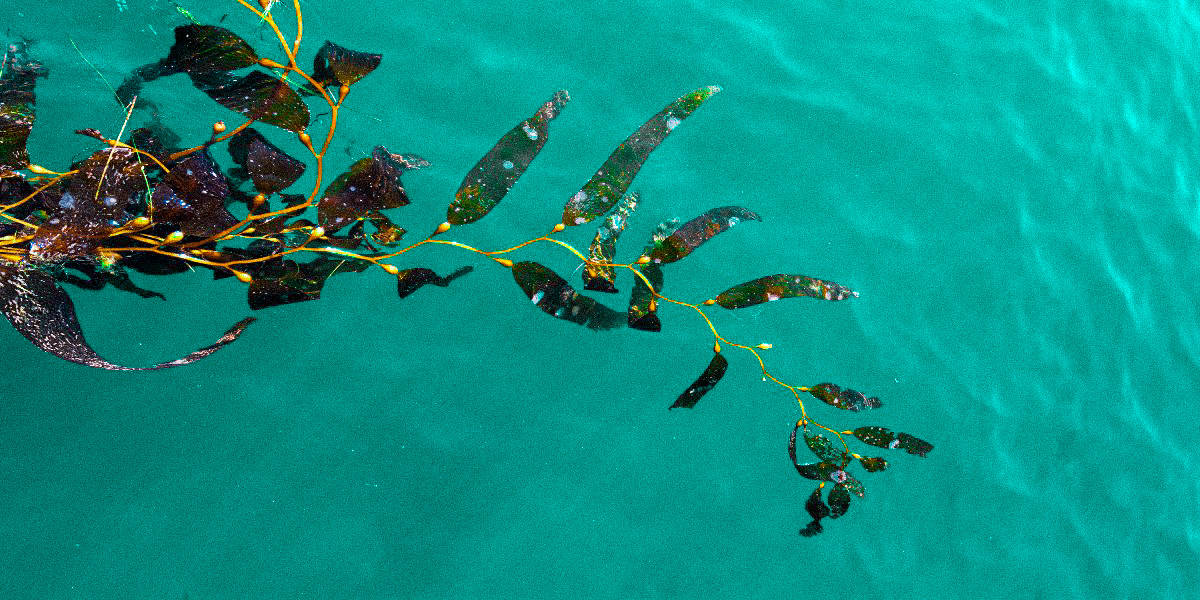
Get Involved
Still an emerging field, seaweed aquaculture needs your help! Spread the word about restorative ocean farming by sharing this article or getting involved in our Going Blue Campaign. Show support for seaweed by trying some kelp products from companies like Blue Evolution, the Sea Tangle Noodle Company, Atlantic Sea Farms, or the Seaweed Bath Company. Wondering how to grow seaweed yourself? Become a kelp farmer with organizations such as GreenWave or AtSeaNova offering training and internship programs to new farmers. If purchasing a kelp farm is too much of a commitment, you can always adopt one. Of course, donations always help too.
FINAL THOUGHTS
Kelp Farming
Regenerative seaweed farming is the most environmentally efficient way to produce leafy greens and animal proteins. Unlike unsustainable land-based practices, kelp farming requires no additional input of freshwater, pesticides, and fertilizers. Seaweed harvesting also preserves land and topsoil which is declining globally. By cultivating kelp, we can provide food for a growing population without using up valuable, habitable space. Perhaps the true benefit of harvesting kelp lies in its restorative nature. Seaweed farms improve water quality, remove pollutants, and reduce the severity of global climate change. With other useful applications in energy, biomedicine, and bioplastics – the demand for kelp is higher than ever.
FAQs
Kelp Farming
1. What is Ocean Farming?
Ocean kelp farming is the growing and harvesting of seaweed for food, fuel, or regenerative purposes. Kelp is an ideal crop because it can be grown in the open ocean using little space, zero fresh water, fertilizer, or pesticides. Popular for its small ecological footprint and high production yield, kelp farming is increasing along coastlines worldwide. While kelp can be used to make various products, the most appealing aspect of seaweed farming is its restorative nature. By removing vast amounts of the heat-trapping gas, carbon dioxide, through photosynthesis, seaweed harvesting is a viable solution to global climate change and ocean acidification. Restorative ocean farming also reduces pollutants and improves local water quality.
2. How does kelp farming work?
Known as 3-D ocean farming or vertical ocean farming, it uses vertical farms to produce what the ocean naturally provides – seaweed and shellfish. Growing on suspended ropes or structures, seaweed absorbs nutrients and collects energy from the sun. In turn, algae create enough food and oxygen to support the entire food web. Shellfish typically grow near kelp, filtering small particles from the water and providing habitat for larger species. Utilizing this simple but efficient model, 3-D ocean farms can help rehabilitate the ocean’s health.
3. What makes kelp farming sustainable?
Often marketed as a zero-input crop, seaweed requires no freshwater, pesticides, fertilizers, feed, or soil. Not only is kelp zero input, but the rapidly growing algae improves water quality. By removing nitrogen and phosphorus, kelp farming reduces the impact of land-based agriculture. Kelp also removes large amounts of carbon dioxide, acting as a carbon sink to mitigate the impacts of climate change and ocean acidification. Unlike detrimental land-based agricultural practices, kelp farming restores the environment while providing enough food to feed the planet.
4. What are the commercial uses for kelp?
High in sodium, iodine, and potassium compounds, kelp has been commercially harvested since the 16th century. Today, seaweed is found in numerous everyday products. Full of complex carbohydrates, algae are commonly used as a thickening agents in cosmetics, industrial solutions, and food. Packed with vitamins, minerals, protein, and fiber, seaweed can also be consumed directly as a sea vegetable. While seaweed has been a traditional staple amongst Asian dishes, farmers and chefs alike are creating innovative ways to incorporate kelp into western diets.
Many industries are actively researching and developing new commercial uses for kelp. Seaweed is full of complex sugars called glycans, which can be spun into fibers and loaded into a 3-D printer. Seaweed extracts can create anything from cotton alternatives to bioplastics, which reduce marine plastics and waste. Glycans also have interesting anti-inflammatory and antimicrobial properties and closely mimic mammalian connective tissue. For this reason, glycans provide exciting applications in the biomedical field. Seaweed also shows promising capabilities as a biofuel. Ethanol production using seaweed is far more sustainable than corn-made ethanol and could even replace fossil fuel consumption.
SOURCES
KELP FARMING
- Soil and Seaweed: Farming Our Way To A Climate Solution, Scientificamerican.com
- Seaweed: The Food And Fuel Of The Future , BBC.com
- Vertical Ocean Farms That Can Feed Us And Help Our Seas, ideas.ted.com
- Restorative Aquaculture For Nature And Communities, nature.org
REACH OUT
We always speak about ‘They’. They need to do something about the plastic problem. They need to stop overfishing. What They are doing to our oceans is simply unacceptable. But who are They?
The government? The government is an administrative body elected by the people. The government exists only to serve out the needs of those people. They is in fact our society, a collection of individuals. You are one of those individuals, and so am I. There is no They, there is only We, and We are all part of the problem. However, We can choose to be part of the solution instead. Sure, sometimes it feels like one individual has such a small chance of creating meaningful change – so why bother. But remember, if everyone had that mindset, there is 100% chance that nothing will change.
We only have one Earth. We can make a difference.
You have a Part to Play – join us in our fight against the Ecological Disaster of our Age.


